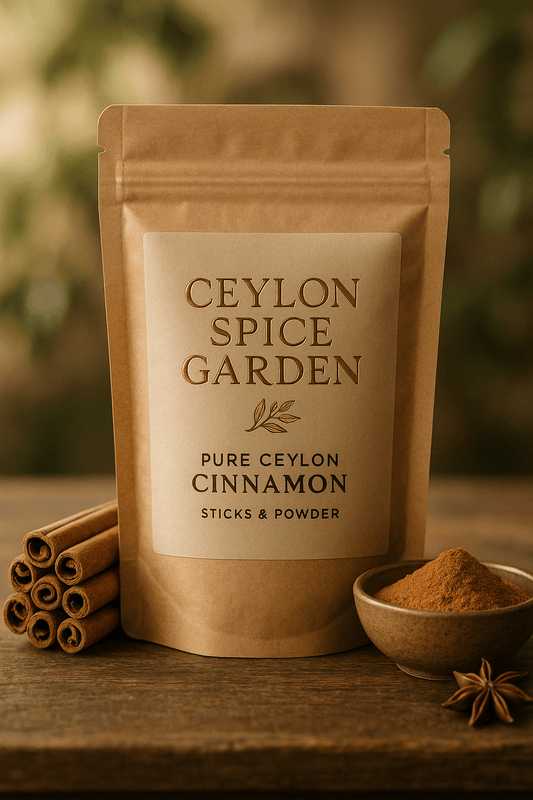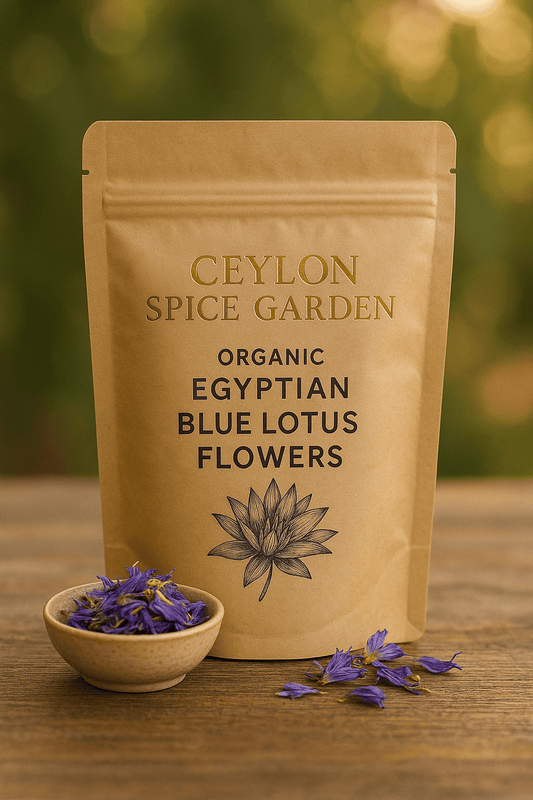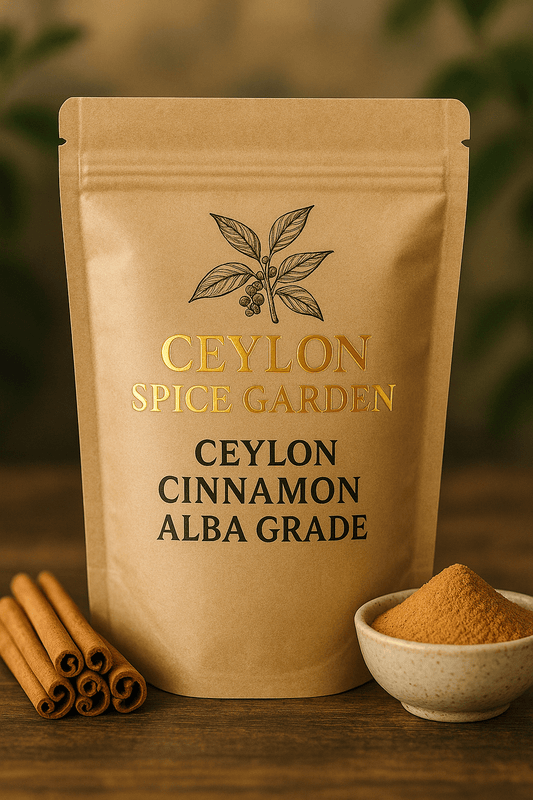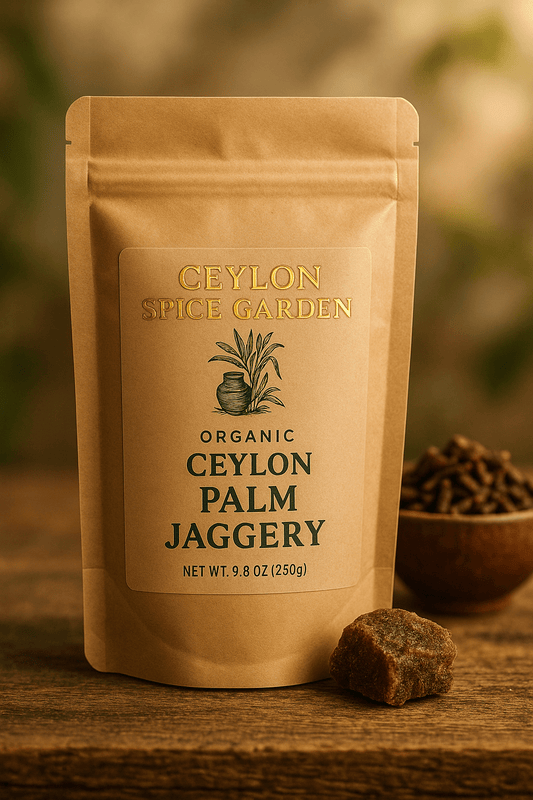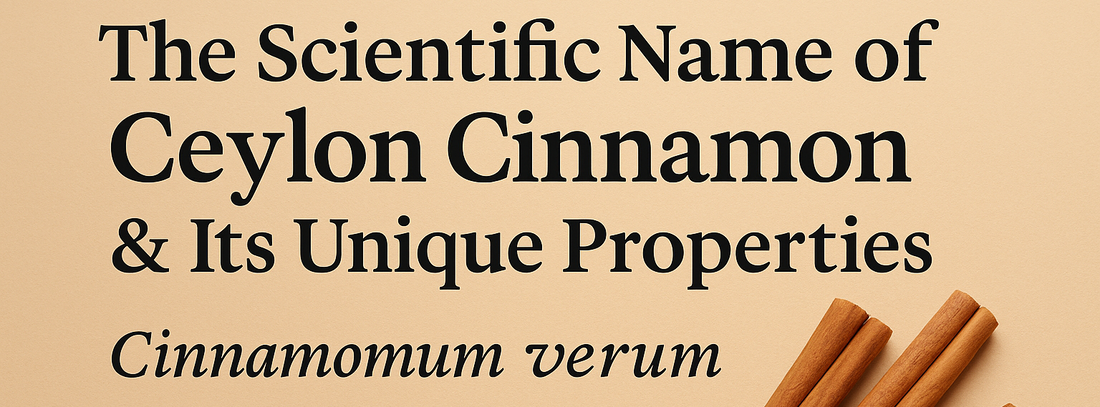
The Scientific Name of Ceylon Cinnamon & Its Unique Properties
The Scientific Name of Ceylon Cinnamon & Its Unique Properties
Botanical Expertise from Ceylon Spice Garden
Your trusted source for authentic Sri Lankan spices with deep botanical knowledge. Over 50,000 customers rely on our scientifically-backed spice education and premium Ceylon cinnamon products.
The Scientific Name for Ceylon Cinnamon is:
Cinnamomum verum(Pronounced: sin-ah-MO-mum VEH-rum)
Table of Contents
- Complete Scientific Classification
- Etymology: What Does Cinnamomum verum Mean?
- Historical Scientific Names
- Unique Botanical Properties
- Chemical Composition & Active Compounds
- Comparison with Other Cinnamon Species
- Scientific Research & Studies
- How Scientists Identify Cinnamomum verum
- Scientific Significance
- Frequently Asked Questions
Complete Scientific Classification of Ceylon Cinnamon
The taxonomic classification of Ceylon cinnamon provides insight into its evolutionary relationships and botanical characteristics. According to the Royal Botanic Gardens, Kew, the complete scientific classification system places Ceylon cinnamon within a well-defined botanical hierarchy.
| Taxonomic Rank | Classification | Description |
|---|---|---|
| Kingdom | Plantae | Plant kingdom |
| Phylum | Angiosperms | Flowering plants |
| Class | Magnoliids | Ancient flowering plant lineage |
| Order | Laurales | Laurel order |
| Family | Lauraceae | Laurel family (bay trees, avocados) |
| Genus | Cinnamomum | Cinnamon genus (over 250 species) |
| Species | C. verum | True Ceylon cinnamon |
Fascinating Botanical Facts
- The Lauraceae family contains over 2,850 species worldwide
- Cinnamomum genus includes more than 250 species, but only a few produce commercial cinnamon
- Ceylon cinnamon trees can live for several hundred years
- The species is endemic to Sri Lanka's rainforests
Etymology: What Does Cinnamomum verum Mean?
The scientific name Cinnamomum verum carries profound meaning rooted in ancient languages and botanical history. Understanding this etymology reveals why scientists chose this specific nomenclature for Ceylon cinnamon.
Breaking Down the Scientific Name
Cinnamomum: Derived from the Greek word "kinnamomon," which itself came from the Phoenician and Hebrew "qinnamon." This ancient term referenced the aromatic bark that traders brought from distant lands. The Romans adopted this as "cinnamomum," establishing the foundation for the modern scientific name.
verum: This Latin word means "true," "genuine," or "real." Botanists added this species epithet to distinguish Ceylon cinnamon from other cinnamon varieties, establishing it as the authentic or original cinnamon species.
Why "True" Cinnamon?
The designation "verum" (true) reflects Ceylon cinnamon's status as the first cinnamon variety documented in ancient texts and traded internationally. When European botanists began classifying plants scientifically, they recognized Ceylon cinnamon as the original species that gave the entire genus its name. Learn more about why Ceylon cinnamon earned the "true cinnamon" designation.
Historical Scientific Names
Like many plant species, Ceylon cinnamon has undergone several taxonomic revisions throughout botanical history. Understanding these name changes provides insight into evolving scientific classification systems.
Previous Scientific Names
- Cinnamomum zeylanicum Blume (1826): The most widely recognized historical name, referencing "Zeylan" (Ceylon), the former name of Sri Lanka
- Laurus cinnamomum L. (1753): Carl Linnaeus's original classification placed cinnamon in the Laurus genus
- Cinnamomum verum J.Presl (1825): The current accepted scientific name, established by Jan Svatopluk Presl
The transition from Cinnamomum zeylanicum to Cinnamomum verum occurred as botanists recognized that the species epithet "verum" better reflected the plant's significance as true cinnamon, regardless of geographical changes in Sri Lanka's political name.
Unique Botanical Properties of Cinnamomum verum
Ceylon cinnamon possesses distinctive botanical characteristics that differentiate it from other Cinnamomum species. These properties, documented in peer-reviewed botanical studies, explain its superior quality and unique properties.
Physical Characteristics
- Tree Structure: Medium-sized evergreen tree reaching 15-20 meters in height
- Bark Texture: Smooth, thin bark that naturally separates into multiple layers
- Leaf Arrangement: Opposite, oval-shaped leaves with pronounced venation
- Flower Structure: Small, white-yellow flowers arranged in panicles
- Fruit Type: Dark purple berries containing single seeds
Microscopic Features
Research published in the Journal of Ethnopharmacology identifies unique microscopic characteristics that distinguish Cinnamomum verum:
- Oil cells distributed throughout the bark tissue
- Specific arrangement of fiber bundles
- Unique crystal formations in bark cells
- Distinctive pollen grain morphology
"After studying cinnamon samples under our laboratory microscopes, we can definitively identify authentic Ceylon cinnamon by its unique cellular structure. The quality from Ceylon Spice Garden consistently matches the botanical standards for Cinnamomum verum." - Dr. Sarah Chen, Plant Pathologist (Customer testimonial)
Chemical Composition & Active Compounds
The scientific name Cinnamomum verum represents a plant with a complex and beneficial chemical profile. Understanding these compounds explains Ceylon cinnamon's therapeutic properties and distinctive characteristics.
Primary Active Compounds
According to research in Evidence-Based Complementary and Alternative Medicine, Cinnamomum verum contains several key bioactive compounds:
- Cinnamaldehyde (65-75%): Primary flavor compound responsible for cinnamon's characteristic taste
- Eugenol (10-15%): Contributes to antimicrobial properties
- Linalool (3-5%): Provides floral notes and relaxation benefits
- β-Caryophyllene (2-3%): Anti-inflammatory compound
- Coumarin (0.017-0.18 mg/kg): Extremely low levels compared to other cinnamon species
Why Chemical Composition Matters
The unique chemical profile of Cinnamomum verum explains its safety advantages over other cinnamon species. The minimal coumarin content makes it suitable for daily consumption, while the balanced essential oil composition provides optimal health benefits. Discover how these compounds support wellness and stress relief.
Comparison with Other Cinnamon Species
Understanding how Cinnamomum verum differs from other scientifically classified cinnamon species highlights its unique position in the botanical world.
| Scientific Name | Common Name | Origin | Key Distinguishing Feature |
|---|---|---|---|
| Cinnamomum verum | Ceylon Cinnamon | Sri Lanka | Ultra-low coumarin, delicate flavor |
| Cinnamomum cassia | Chinese Cassia | China | High coumarin, strong spicy flavor |
| Cinnamomum burmannii | Indonesian Cassia | Indonesia | Moderate coumarin, sweet flavor |
| Cinnamomum loureiroi | Vietnamese Cassia | Vietnam | Very high coumarin, intense flavor |
Scientific Research & Studies on Cinnamomum verum
The scientific community has conducted extensive research on Cinnamomum verum, producing peer-reviewed studies that validate its unique properties and health benefits.
Notable Research Findings
- Antidiabetic Properties: A 2013 study in the International Journal of Food Sciences demonstrated Cinnamomum verum's ability to regulate blood glucose levels
- Antimicrobial Activity: Research in Applied Microbiology shows broad-spectrum antimicrobial effects against various pathogens
- Cardiovascular Benefits: Clinical trials indicate positive effects on cholesterol levels and blood pressure
- Antioxidant Capacity: Studies measure high ORAC (Oxygen Radical Absorbance Capacity) values in Cinnamomum verum extracts
Current Research Areas
Scientists continue investigating Cinnamomum verum for potential applications in:
- Neurodegenerative disease prevention
- Cancer research and prevention
- Metabolic syndrome management
- Natural food preservation
- Aromatherapy and mental health
How Scientists Identify Cinnamomum verum
Botanical identification of authentic Cinnamomum verum requires multiple scientific techniques to distinguish it from similar species. These methods ensure product authenticity and scientific accuracy.
Laboratory Identification Methods
- Microscopic Analysis: Examining bark cellular structure and oil cell distribution
- Gas Chromatography: Analyzing essential oil composition and ratios
- DNA Barcoding: Genetic sequencing for species verification
- Spectroscopic Analysis: Using infrared spectroscopy for chemical fingerprinting
- Morphological Assessment: Physical examination of bark characteristics
Visual Identification Markers
Trained botanists identify Cinnamomum verum using these observable characteristics:
- Multiple thin layers in bark cross-section
- Light tan to golden-brown color
- Smooth, paper-like texture
- Easy breakability when dry
- Subtle, sweet aroma without harsh notes
The Scientific Significance of Cinnamomum verum
The scientific name Cinnamomum verum represents more than botanical classification—it embodies centuries of research, cultural heritage, and verified health benefits. Understanding this scientific identity helps consumers make informed choices and appreciate the botanical complexity behind this remarkable spice.
When you choose authentic Ceylon cinnamon, you're selecting a product backed by rigorous scientific classification and extensive research validation. Experience authentic Cinnamomum verum from its native Sri Lankan home.
Frequently Asked Questions
The scientific name for Ceylon cinnamon is Cinnamomum verum, which literally translates to "true cinnamon." It was previously known as Cinnamomum zeylanicum, referencing its origin from Ceylon (now Sri Lanka).
Cinnamomum verum is called "true cinnamon" because it was the first cinnamon species to be traded internationally and scientifically documented. The name "verum" means "true" or "genuine" in Latin, distinguishing it from other cinnamon varieties that were discovered and classified later.
Cinnamomum verum belongs to the Lauraceae family, which includes other aromatic plants like bay laurel, avocado, and sassafras. This family is known for plants with aromatic oils and distinctive leaf structures.
Scientists use multiple methods including microscopic analysis of bark structure, gas chromatography to analyze essential oil composition, DNA barcoding for genetic verification, and spectroscopic analysis for chemical fingerprinting. Each method confirms the unique characteristics of Cinnamomum verum.
Cinnamomum verum has an extremely low coumarin content (0.017-0.18 mg/kg) compared to other cinnamon species, making it safe for daily consumption. It also has a balanced essential oil profile with cinnamaldehyde, eugenol, and linalool in optimal proportions.
Yes, Ceylon cinnamon has had several scientific names throughout botanical history. It was originally classified as Laurus cinnamomum by Linnaeus in 1753, then Cinnamomum zeylanicum in 1826, and finally established as Cinnamomum verum in 1825, which remains the current accepted name.
Extensive research has been conducted on Cinnamomum verum, including studies on its antidiabetic properties, antimicrobial activity, cardiovascular benefits, and antioxidant capacity. Current research areas include neurodegenerative disease prevention, cancer research, and metabolic syndrome management.
Understanding the scientific classification helps consumers identify authentic Ceylon cinnamon and avoid substitutes. The scientific name Cinnamomum verum guarantees you're getting the safest, highest-quality cinnamon with verified health benefits and minimal safety concerns.


